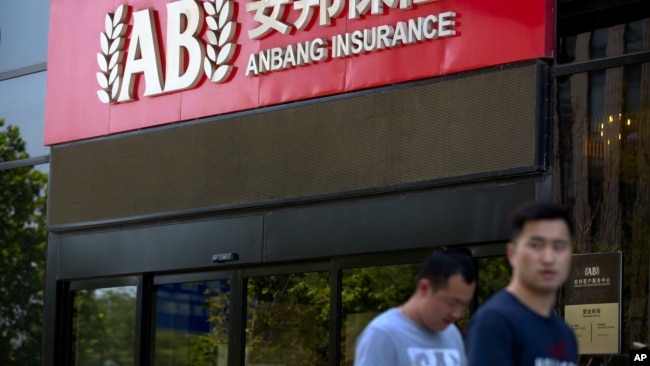
–

 –
–
Alzheimer’s is the fastest-growing, major fatal disease in China. Today there are at least 9.5mn diagnosed sufferers in China with perhaps as many cases undiagnosed. Almost one million Chinese are diagnosed every year with Alzheimer’s, with the number of new cases each year expected to accelerate sharply beginning around 2030.
It is also the major disease in China with the greatest mismatch between the number of patients and the amount of specialized care available. The US has about half the number of Alzheimer’s patients as China, and 73,000 beds in specialist Alzheimer’s treatment centers. China today has fewer than 200 beds. Alz care is a thriving $250bn industry in the US. In China, it’s barely even begun.
The reason for this mismatch is clear. China’s healthcare system is already under strain to reform and improve the quality of care overall, especially for acute and infectious diseases like cancer, hepatitis and serious asthma. Alzheimer’s is not now a top priority either for government policy or for healthcare companies and investors. But, over the coming decades, no disease will likely impact more lives in China or likely cost China more to treat. By 2050, it is projected the number of Alzheimer’s patients in China will exceed 45 million, about half of all those worldwide with the disease.
The total cost of treating all those people is impossible to estimate. Alzheimer’s is already the most expensive disease to treat in the US. The US government pays for more than half, through national health insurance paid through taxes on companies and individuals. With the number of Alzheimer’s cases in the US expected to double in the next 20 years, US government spending on Alzheimer’s care is on course to become the single-most expensive part of the US budget, larger even than military spending.
China will almost certainly take a different path than the US, with more spending done by patients and their families, rather than through national health insurance. On average, Chinese Alzheimer’s patients will also be cared for longer by relatives, rather than placed in specialized nursing homes.
But, the almost total lack of Alzheimer’s treatment centers, and trained nurses and doctors, is one of the most significant market failures in China’s healthcare industry. While the government, SOEs and private sector have been making significant investments in old age care (what the Chinese refer to as “yanglaoâ€), most of this money has gone towards building and selling apartments in retirement communities, places for older people who are fundamentally still healthy and active. There has been little investment in the area of elderly care with most urgent need now and in the future– providing specialist centers for people with Alzheimer’s and other chronic diseases that afflict old people like Parkinson’s, serious arthritis, recovery from stroke.
In China, Alzheimer’s is still often seen not as a disease but as inevitable and natural outcome of aging, a sad side-effect of the fortunate fact of being long-lived. China’s national broadcaster, CCTV has lately been broadcasting public service ads to raise awareness that Alzheimer’s is a disease. This is the same education process the US and Europe began over 40 years ago.  There were few cases anywhere in the world then. Europe and the US, the private and public sector, began spending heavily to train doctors and nurses, build out its care infrastructure to meet the projected surge in patients.
Alzheimer’s, like diabetes, obesity, colorectal cancer, is a disease of economic success. As a country becomes richer and healthcare standards improve, people live longer. Nowhere has this transformation happened more quickly than in China, meaning nowhere else has ever seen as explosive growth in the number of Alzheimer’s cases. The average life expectancy in China has increased more in the last 30 years than it did in the previous 3,000. China’s life expectancy is still growing faster than in developed countries. Chinese in Hong Kong recently passed Japan to become the world’s longest-living population.
The facts: Alzheimer’s is an incurable disease that afflicts a large number of older people, but not the majority. 3 percent of people age 65-74, 17% of people between 75 and 85 will develop the disease. For those over 85%, there is a 30% chance of having it.  It is a mystery why some old people get the disease and most others do not. One interesting correlation: people with higher education levels are less likely to get the disease. The more you use your brain in complex ways, the more you may inoculate yourself against Alzheimer’s.
Rural people are more susceptible than city-dwellers. Because China still has a larger percentage of its population living in rural areas,this suggests that the percentage of the +80 year-old population with Alzheimer’s in China may end up higher than in US, Europe or other Asian more urbanized societies including Japan, Korea, Taiwan, Singapore.
Women are far more likely to get Alzheimers than men. The reason is women on average live longer.
Despite billions of dollars in scientific and pharmaceutical research in the West, there are no drug or surgical treatments for Alzheimer’s. A drug cure for AD, widely predicted in the West 20 years ago, now seems very unlikely. Brain chemistry and biology make developing a drug for Alzheimer’s difficult. Since 2002, 244 drugs for Alzheimer’s were tested in clinical trials in the US and Europe. Only one received US FDA approval. It has very limited and short-term impact.
Although there are no drugs to cure Alzheimer’s, there have been remarkable successes in Europe and the US, especially in the last ten years, at Alzheimer’s care facilities managed by specially-trained nurses and doctors. They work together to slow the progress of Alzheimer’s patients, through physical therapy, psychological counseling, special equipment to improve memory and mobility, lots of one-on-one assistance, and a safe living environment designed for care of people gradually losing their ability to think, speak and function. The result: Alzheimer’s patients in the US and Europe now live twice as long after diagnosis as they did 30 years ago, an average of 8-10 years after diagnosis.
The longer Alzheimer’s patients live, the more likely it is they will spend the final years in specialized care facilities. In this final stage, Alzheimer’s patients are often unable to talk, feed or bathe themselves, can remember almost nothing. The body’s immune system gradually stops working. As the brain is overcome by the disease and begins to decompose, even automatic body functions like breathing, digestion and swallowing are disrupted.
In the US and Europe, the average annual cost of caring for an Alzheimer’s patient is about $60,000, with the highest amount coming in the last two years of life. There are dozens of US and European listed companies focused on doing research and providing specialist Alzheimer’s care in nursing homes and clinics. In China, there are none.
Traditionally in China, more money has been spent on young children’s education than on medical care for older people. But, as Chinese live longer the way money is spent across three generations will likely change. The grandchildren of people in their 80s will usually already be through college and working. That leaves more money, both in the hands of older people and their children, to provide more high-quality care for people at the end of their lives.
A French listed company, Orpea, is moving fastest to build a big business in AD care in China. Last year they opened China’s most advanced Alzheimer’s clinic in in Nanjing. Orpea are among the world leaders in Alzheimer’s care. It is their first nursing home in China and they are planning now to expand quickly across the country. They have 775 nursing homes and clinics in Europe. Last year’s total revenues were €2.8 billion.
In Nanjing, Orpea built a 5-star facility, as deluxe as one would find anywhere in the world, with marble floors, an elegant dining room, a huge indoor pool and water therapy center. In total, it has 140 beds, including 22 in the Alzheimer’s clinic. None of the real estate is for sale. It is a service business, offering specialized care and housing to elderly including even the most challenging patients, those with late-stage Alzheimer’s disease 。
Most of those living in the Nanjing facility are paying about Rmb20,000 a month. Though expensive, that’s still half the price per year of a shared room in a 3-star nursing home in the US. The level of care is as high as any specialized Alzheimer’s care center in the US or Europe. In almost all cases, the children of the patients are paying.
Regardless of culture, Alzheimer’s tends to effect people the same way. Nothing can restore patients’ memory, or stop the progress of a disease that is, in all cases, 100% fatal. The goal of treatment is to slow the disease progression by treating early related health problems and the decline in motor skills.
Most important is keeping patients physically and intellectually active. Orpea is using a new form of treatment known as “psychomotricityâ€, which rebuilds connections between a patient’s motor and cognitive skills. Successful treatment not only lengthens the lives of people with Alzheimer’s, it makes these patients more content, more social, more self-sufficient than if they were being treated by relatives at home.
Orpea is also quickly learning new things about Alzheimer’s and how to care for patients in China. Among late-stage Alzheimer’s patients, those who have lost the ability to speak, to recognize people or their surroundings, one of the last skills they hold onto and enjoy is the ability to stuff meat dumplings.  There’s a special kitchen and dining room just for Alzheimer’s patients. The Nanjing center has both a KTV and a “memory room†with objects from the 1950s-60s. As Alzheimer’s progresses, patients can’t recall recent events, but often recover older memories for their youth, including old songs.
Orpea plans to open at least two new nursing homes in Beijing this year and add other facilities soon in Shanghai. For now, they still have China’s Alzheimer’s care market, especially at the high-end, largely to themselves. But, they welcome competitors. “The need is so great, and the impact on patients’ lives so positive that we hope China will quickly develop a large, capable group of companies to care for people here,†explains Orpea’s China CEO, Nathaniel Farouz.
How should China build its Alzheimer’s treatment infrastructure and bring it quickly up to global standards? The biggest need will be providing care to Chinese with average family income and savings levels.
One likely path will be for Chinese companies to acquire or partner with specialist nursing home companies in the US and Europe. There were rumors recently that one large Chinese investment group, CMIG, was seeking to buy Orpea. Orpea, though, denies any deal is being actively discussed.
If there’s one advantage to getting a late start, it’s that China can learn from the mistakes and adopt the best ideas developed in the US, Europe and Asia. Japan, for example, is not only building specialist nursing homes for Alzheimer’s patients in the final years of their lives, but also community centers for those still living at home or with relatives. Family members can drop off parents with Alzheimer’s to give caregivers a few hours to rest or run errands – or even for a few nights so they can take a quick vacation.
Home nursing care is also expanding quickly in the West. This too seems to be improving and lengthening the lives of Alzheimer’s patients. Home nursing is still at a very early stage in China, but it is the fastest growing industry and largest source of new jobs in the US.
The main beneficiaries of professional Alzheimer’s care are the patients, whose lives and health are improved. But, there are also economic benefits for the society as a whole. Alzheimer’s care potentially can offer millions of new, long-term and well-paying jobs in China, for people at all educational levels.
From little spending now on specialized Alzheimer’s care, China will certainly grow into the world’s largest market for Alzheimer’s care. Government, at national, provincial and local level, should play a key policy-making, regulatory and coordinating role. Not only should they set standards and provide more transparent rules on which aspects of AD care will be reimbursed, governments can also do a great deal to foster the growth in urban China of high-quality private-sector nursing homes for chronically-ill old people. As the UN World Health Organization recommended in a recent report, “Central or local governments could adopt preferential tax policies or offer other financial incentivesâ€Â for Alzheimer’s care services and education.”
In rural China, the government’s role will be even more important. The number of Alzheimer’s cases among China’s rural population likely will be proportionately higher and financial resources of families and local governments more limited.
It’s hard to think of a business opportunity in China with better long-term investment fundamentals than specialized Alzheimer’s care. But, the industry should not be measured or motivated by profits. Its success and greatest return on investment will be in limiting the suffering, pain, helplessness and sadness of Alzheimer’s patients and their families.
–
—






























